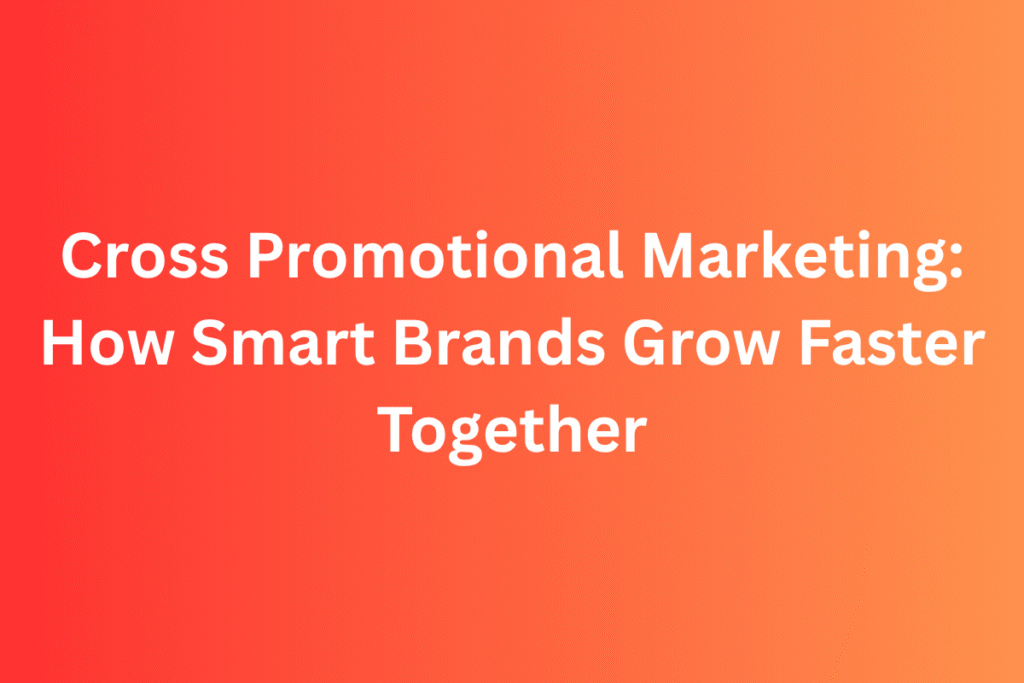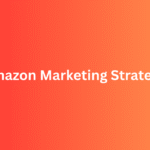Want to grow your brand without burning money on ads? Checkout how cross promotional marketing can be your shortcut to massive exposure, more leads, and higher trust all without doing it alone.
What Is Cross Promotional Marketing?
Cross-promotional marketing is a collaborative strategy where two or more brands promote each other’s products or services to their respective audiences for mutual benefit.
It’s not about competition. It’s about using shared strengths to achieve bigger results whether that’s leads, sales, traffic, or brand awareness.
For example, if a fitness app partners with a protein shake brand, both can introduce each other to new potential customers without spending extra on acquisition. That’s the magic of cross-promotion.
Why Cross Promotion Works So Well
- You access a warm audience: You’re not pitching cold. You’re recommended by a brand they already trust.
- Shared costs and efforts: Instead of running separate campaigns, both brands share content, creative, and reach.
- High ROI: When done right, it’s way more cost-effective than ads.
- Trust by association: Being featured by another brand acts like social proof.
This strategy is ideal for startups, content creators, ecommerce brands, and even local businesses.
Types of Cross Promotional Marketing
Cross-promotional marketing isn’t one-size-fits-all. Depending on your business type and goals, here are the major formats you can choose from:
1. Content Collaboration
This involves co-creating content like blog posts, videos, podcasts, or webinars.
Example:
A digital marketing agency teams up with a design software to publish a joint ebook: “Design + SEO = Conversions”.
Each brand promotes the content to their list, giving dual exposure and more credibility.
2. Product Bundling
Two or more brands bundle their products together into one offer.
Example:
A grooming brand includes a luxury comb from a local woodcraft shop in its premium beard grooming kit.
It boosts perceived value and introduces new products to existing customers.
3. Email List Swaps
Both businesses promote each other’s offers to their email subscribers.
Important:
Make sure the audiences are aligned but not identical like a fashion brand and a skincare label.
4. Social Media Shoutouts
Probably the easiest format. Two brands mention, tag, or highlight each other on Instagram, Twitter, LinkedIn, etc.
It builds fast awareness, especially if both have engaged followings.
5. Co-Branded Campaigns
These are larger, more integrated partnerships, like a joint ad campaign or product launch.
Example:
Uber and Spotify once partnered to allow users to play their Spotify playlists during rides. Win-win.
6. Giveaways & Contests
You run a contest together, where followers must engage with both brands to enter.
This is powerful for lead generation and follower growth.
Applications of Cross Promotional Marketing
Cross-promotional marketing can be applied across different industries and stages of growth. Here’s how businesses typically use it:
1. Startup Growth Hacking
Startups can tap into already-existing audiences by collaborating with non-competing brands in their niche.
It helps validate products, build trust fast, and save ad budget.
2. Product Launches
Collaborating with another brand gives your launch more reach. Whether it’s co-launching a new product or just doing an announcement swap, it builds early traction.
3. Seasonal Campaigns
During holidays or seasonal events, brands often do limited-time collabs to increase urgency and reach.
Example: A holiday bundle between a coffee brand and a cookie company.
4. Influencer + Brand Partnerships
While influencers aren’t always considered cross-promotional partners, nano- and micro-influencers with brands of their own (ebooks, courses, etc.) can be part of a mutual promotion setup.
5. B2B Thought Leadership
In B2B, cross-promotion often happens through guest blogs, podcasts, newsletters, and webinar swaps. It positions both businesses as industry experts.
Best Cross Promotion Examples
Let’s break down a few real-world examples to see how brands have nailed cross-promotional marketing:
1. GoPro + Red Bull
These two brands both focus on adrenaline, adventure, and action. GoPro sponsored Red Bull events, and Red Bull featured GoPro footage.
This collab helped GoPro get more global exposure, and Red Bull added more content firepower.
2. Uber + Spotify
Uber allowed riders to connect their Spotify account and control music in the car. It made rides more personal, and Spotify got in front of a new active audience.
3. Airbnb + Flipboard
When Airbnb wanted to inspire travel through storytelling, it collaborated with Flipboard to create a content-driven campaign with curated travel inspiration.
4. Nike + Apple
Nike created special editions of its gear for Apple devices (Nike+ Apple Watch), and Apple promoted it through its ecosystem. The result? A new fitness-focused tech niche.
5. Local Examples
- A yoga studio collaborating with a juice bar for a “Detox & Stretch” package
- A tattoo artist and clothing brand doing a joint Instagram giveaway
- A SaaS tool partnering with a freelancer platform to host a webinar
You don’t have to be a billion-dollar brand. You just need the right partner and a smart offer.
Cross Promotional Marketing Strategy: Step-by-Step
Here’s how to actually plan and execute a cross-promotion that works.
Step 1: Define Your Goal
Do you want:
- Email subscribers?
- Social media followers?
- Direct sales?
- App installs?
Be crystal clear on what success looks like before you reach out to anyone.
Step 2: Choose the Right Partner
Your ideal partner should have:
- A similar audience (but not your competitor)
- A strong brand reputation
- A platform or channel that complements yours
Don’t just go for big brands. Sometimes smaller partners with high engagement bring better results.
Step 3: Pick the Right Format
Based on your goal, choose a format:
- Want leads? Do a co-branded ebook or webinar
- Want reach? Do a social media swap or giveaway
- Want trust? Do a bundled product or service
Step 4: Set Mutual Value
Answer the question: “What’s in it for them?”
Make sure the campaign brings value to both parties. Sometimes that’s exposure, sometimes that’s money, or even new leads.
Step 5: Promote Like Crazy
Both sides should agree on the timeline, channels, content, and frequency.
Create graphics, email copy, UTM links, and hashtags in advance. Make it easy for both brands to promote consistently.
Step 6: Track, Optimize, Repeat
Use UTM tracking, affiliate links, and campaign tools to measure:
- Traffic
- Leads
- Engagement
- Revenue
Analyze what worked and plan your next one better.
Cross Promotion Ideas You Can Steal Today
Need inspiration? Here are practical ideas you can apply across niches.
Ecommerce
- Bundle your product with a complementary brand (e.g., candles + books)
- Offer discount codes for your partner’s product inside your packaging
- Do a shared unboxing video on YouTube or Instagram
Service-Based Businesses
- Collaborate on a joint workshop (e.g., web designer + branding expert)
- Swap newsletter mentions with a non-competing coach or consultant
- Interview each other for a podcast
Content Creators / Educators
- Cross-promote each other’s YouTube videos or blog articles
- Co-host a free webinar or challenge
- Publish a roundup guide featuring 5–10 niche partners
Local Businesses
- Run joint local ads or events
- Feature each other on Google My Business or social profiles
- Collaborate on gift cards or loyalty rewards
Cross Promotion Is Underrated but Powerful
Too many brands are stuck trying to grow solo.
Cross promotional marketing flips that. It’s a way to collaborate over compete, and the brands that embrace it tend to grow faster, cheaper, and more meaningfully.
Whether you’re launching a product, running a sale, or trying to reach new leads you probably don’t need more ads. You need the right partner and a smart collab.
Ready to Grow Without Ads?
If you’re serious about using cross promotional marketing to scale your reach, grow your list, and build trust but not sure where to start I can help.
Let’s brainstorm a campaign together that actually gets results.
FAQS
What is cross-promotion in marketing?
Cross-promotion in marketing is when two or more brands team up to promote each other’s products or services to their respective audiences. The idea is simple: you introduce your partner’s offerings to your customers, and they do the same for you. It’s a win-win because both brands get extra exposure, leads, or sales — often without spending more on advertising.
Example: A coffee brand promotes a local bakery’s muffins in their shop, and the bakery does the same for the coffee brand.
What is cross market strategy?
A cross-market strategy (also called cross-marketing) is a broader approach where a business targets customers in different but related markets by forming strategic alliances or running shared campaigns.
It’s not just about promotions — it can include joint ventures, shared product launches, or co-branding efforts. The goal is to tap into new customer bases through trusted brand collaborations that align in values, products, or customer needs.
Example: A fitness app expanding its reach by partnering with a meal prep service to offer integrated health plans — now targeting both fitness and food markets.
What is the cross-promotion theory?
Cross-promotion theory is based on the idea that customers are more likely to trust and try a new product or service when it’s endorsed by a brand they already trust. It leverages social proof and existing customer relationships to reduce resistance and build instant credibility.
The theory suggests that trust is transferable — so if Brand A recommends Brand B, loyal customers of Brand A are more open to trying Brand B without hesitation.
It’s why cross-promotion often has higher conversion rates than cold marketing efforts.
What is meant by cross media promotion?
Cross media promotion is when a campaign is spread across different types of media platforms — like print, digital, radio, TV, or social media — to promote a brand, product, or collaboration.
It’s often used to maximize reach and reinforce messaging by showing up where your audience already hangs out, in various formats.
Example: A film promotion might involve:
- TV ads
- YouTube trailers
- Instagram influencer reels
- Podcast sponsorships
- Magazine interviews
All working together to create a unified promotional push.
Discover more from PratsDigital
Subscribe to get the latest posts sent to your email.



Your blog is a constant source of inspiration for me. Your passion for your subject matter is palpable, and it’s clear that you pour your heart and soul into every post. Keep up the incredible work!